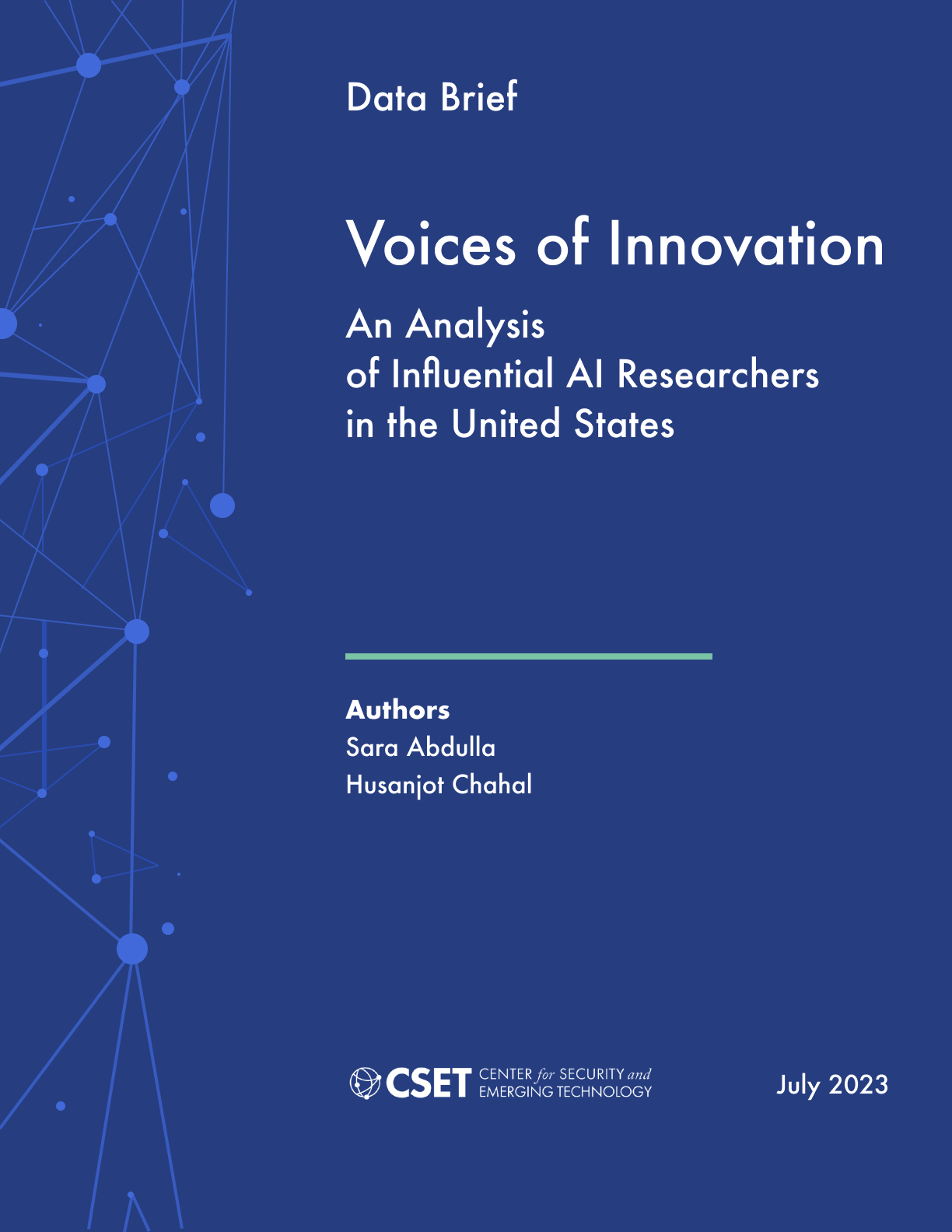Executive Summary
Artificial intelligence (AI) research has grown exponentially in the past several decades, and many of the most exciting breakthroughs have come out of U.S. universities, companies, and research institutions. Although highly accomplished AI researchers are by no means the only talent driving research, development, and commercialization in this field, their role is paramount. Understanding the profiles and careers of current leading U.S. researchers can help decisionmakers understand the existing state of the elite research workforce, and, importantly, how to cultivate the next generation of leading AI researchers.
This brief uses scholarly publication data and curated career histories to identify leading AI researchers in the United States between 2010 and 2021. We examined their demographic profiles, educational and national backgrounds, research collaboration rates, and stay rates in the United States. The overlap between the top 100 most-published, most-cited, and highest-h-indexed AI researchers in the United States (based on all the AI-related papers published between 2010 and 2021) yielded 217 distinct researchers. Our key findings are as follows.
Demographic characteristics and institutional affiliations
- As of September 2022, the top AI researchers in the United States were a homogeneous group in terms of gender, career stage, and institutional affiliation. Men accounted for 94 percent, and women for 6 percent. Most of these leading AI researchers were at the later stages of their careers or retired.
- Sixty-two percent were concentrated in 10 elite universities and top companies.
- About 74 percent of the top U.S. AI researchers held positions at universities while publishing their work during the past decade, though some had spent time at major tech companies such as Google and Microsoft.
- By comparison with the most-published and highest-h-indexed researchers, the most-cited researchers were disproportionately more likely to work in companies rather than at universities.
Foreign-born or foreign-educated AI researchers in the United States: Countries of origin and retention rates
- Of all leading AI researchers in the United States, 70 percent were foreign-born or foreign-educated. The most common places of origin were China (50 researchers) and India (14), followed by the United Kingdom (10) and Taiwan (9).
- 87 percent of the foreign-born or foreign-educated leading AI researchers in the United States remained affiliated with a U.S.-based institution as of September 2022.
International research collaboration
- Among the top U.S. AI researchers in our dataset, foreign-born or foreign-educated researchers had higher rates of international collaboration (50 percent) than their U.S. born/educated counterparts (38 percent). Foreign-born or foreign-educated researchers were generally more likely to collaborate frequently with researchers from their probable country of origin than other researchers.
- The top U.S. AI researchers—regardless of background or country of origin—collaborated most frequently with researchers from China. These patterns of international collaboration are not surprising given that China is the top global producer of AI research.
